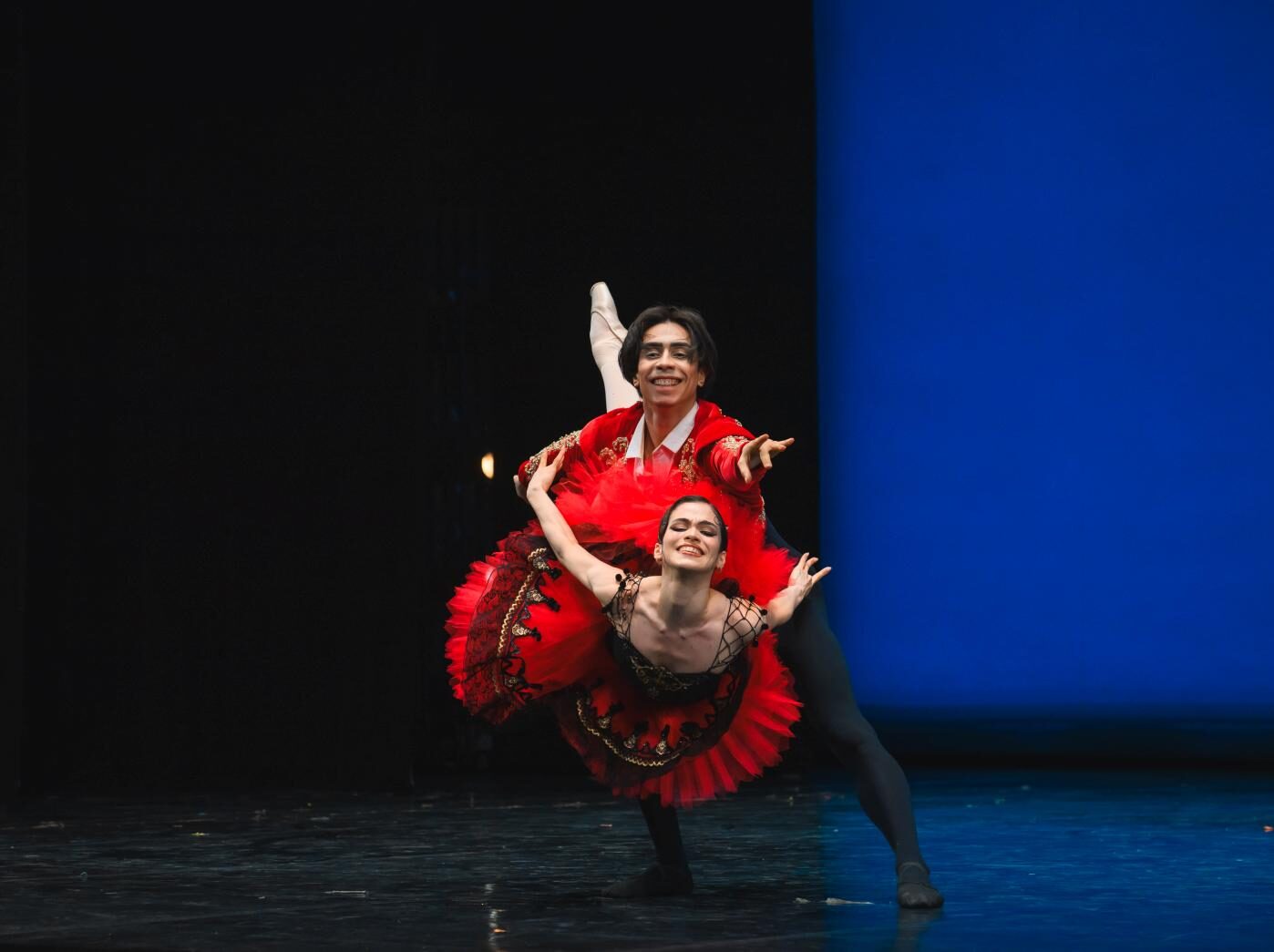“FireWorks”
Gauthier Dance
Theaterhaus Stuttgart
Stuttgart, Germany
April 30, 2025
by Ilona Landgraf
Copyright © 2025 by Ilona Landgraf
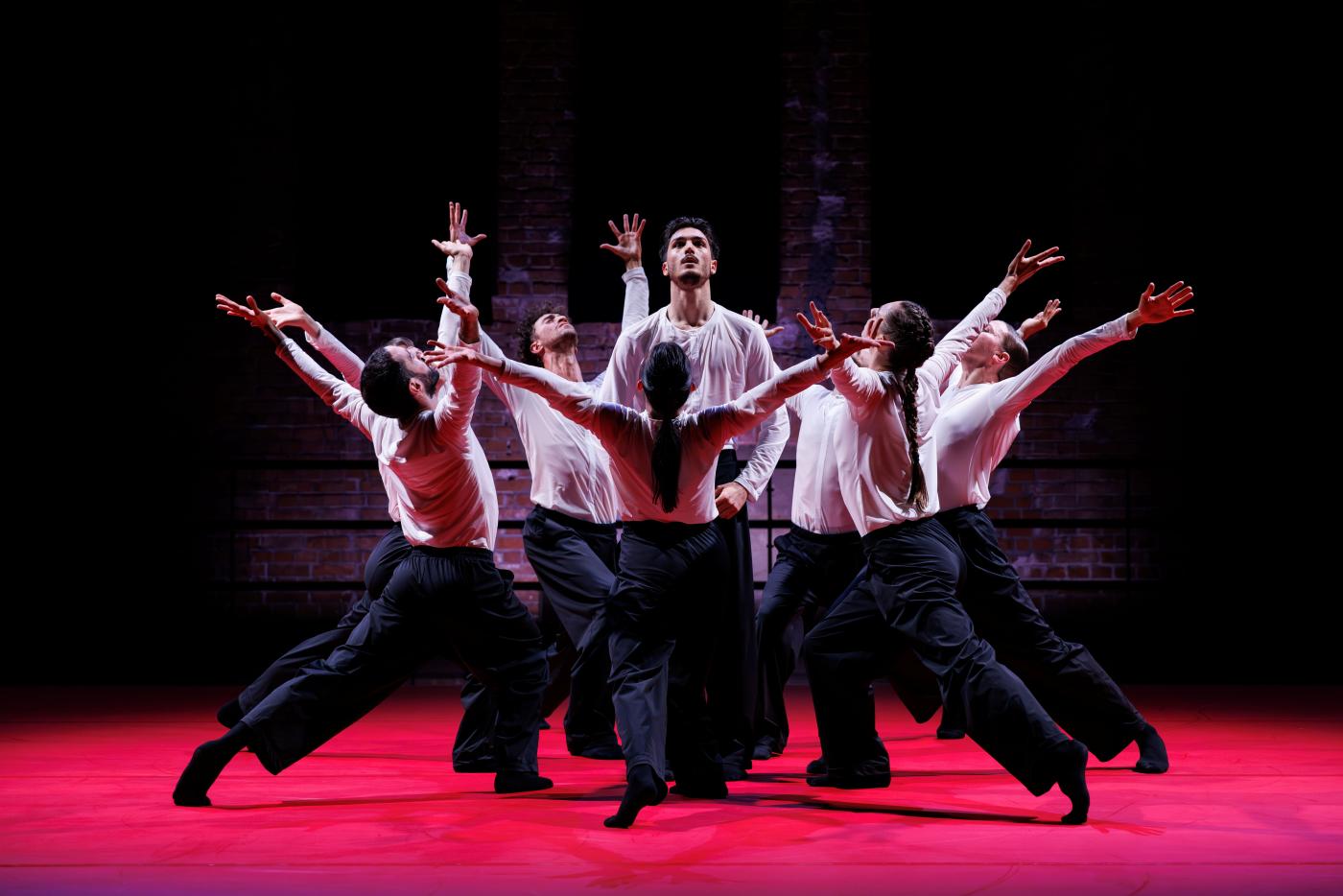 Gauthier Dance’s latest program, FireWorks, is an homage to the Theaterhaus Stuttgart, its home since the company’s foundation in 2007. This year, the Theaterhaus celebrates its fortieth anniversary. In honor of the occasion, the company’s director, Eric Gauthier, selected forty short pieces of music performed at the Theaterhaus over the past decades and asked ten choreographers (among them long-term collaborators) to choose one for a new piece for FireWorks.
Gauthier Dance’s latest program, FireWorks, is an homage to the Theaterhaus Stuttgart, its home since the company’s foundation in 2007. This year, the Theaterhaus celebrates its fortieth anniversary. In honor of the occasion, the company’s director, Eric Gauthier, selected forty short pieces of music performed at the Theaterhaus over the past decades and asked ten choreographers (among them long-term collaborators) to choose one for a new piece for FireWorks.
A born entertainer, Gauthier introduced the program on opening night, welcomed some choreographers, and, in doing so, put the audience in a celebratory mood.
The company’s sixteen dancers sat on chairs lined along the wings with a red carpet between them. As they acted like an onstage audience, a trumpet solo signaled something big to come. It belonged to Ciocârliǎ și suite by Fanfare Ciocǎrlia to which the troupe’s artist in residence, Barak Marshall, created The Gathering, an assembly of athletic and showy solos and partner dances during which the dancers roared and cheered each other.
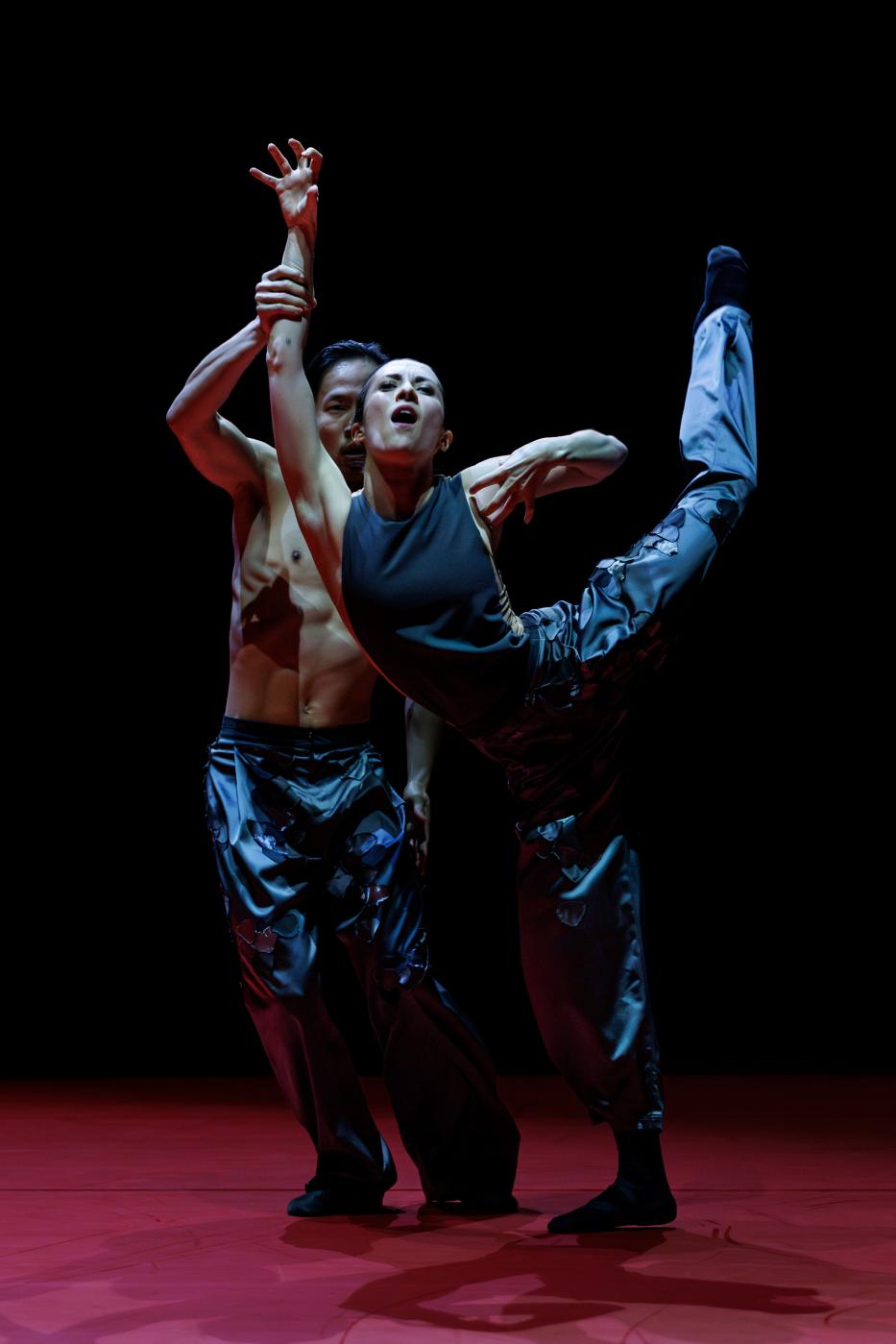 Lighting tinged the stage with shades of deep pink in Mauro Bigonzetti’s Fully Blue as if to suggest that the crackling lines of Chet Baker’s I’m Old Fashioned were kitschy. The couple (Garazi Perez Oloriz and Shawn Wu), whose outstretched fingers seemed to grab at the past, wasn’t old-fashioned. Rather, they wavered between flowing and fractured movements common in the contemporary style. Midway, the choreography began to look labored and repetitive. Perez Oloriz finally stepped on the thigh of the sitting Wu and draped herself over him like a blanket covering a statue.
Lighting tinged the stage with shades of deep pink in Mauro Bigonzetti’s Fully Blue as if to suggest that the crackling lines of Chet Baker’s I’m Old Fashioned were kitschy. The couple (Garazi Perez Oloriz and Shawn Wu), whose outstretched fingers seemed to grab at the past, wasn’t old-fashioned. Rather, they wavered between flowing and fractured movements common in the contemporary style. Midway, the choreography began to look labored and repetitive. Perez Oloriz finally stepped on the thigh of the sitting Wu and draped herself over him like a blanket covering a statue.
Although Laurie Anderson’s song O Superman was a hit on the UK charts in 1981, I found its continuous loop of the syllable “ha” annoying. Dominique Dumais, artistic director of the ballet company of the Mainfrankentheater Wuerzburg, choreographed Hold me Now to it, a group piece with rhythmically jerking body parts corresponding to the music’s monotonous pulse. The dancers swung like tall grass in the wind, ran and rolled across the floor, and screamed after an inexplicable uproar. At the last series of “ha” sounds, the eight dancers huddled together, their chests pumping in sync.
Marco Goecke, the Theaterhaus’s artist in residence until 2023, contributed Monstruo Grande, a pas de deux to a song by Mercedes Sosa. First, Shori Yamamoto danced a solo with such sharp-mindedness, precision, and ingenuity that I sighed with relief. Quality did exist after all. Some wiry jumps later, Sidney Elizabeth Turtschi joined him, ready to flex her muscles. The more encompassing Sosa’s voice became, the more confined the choreography was.
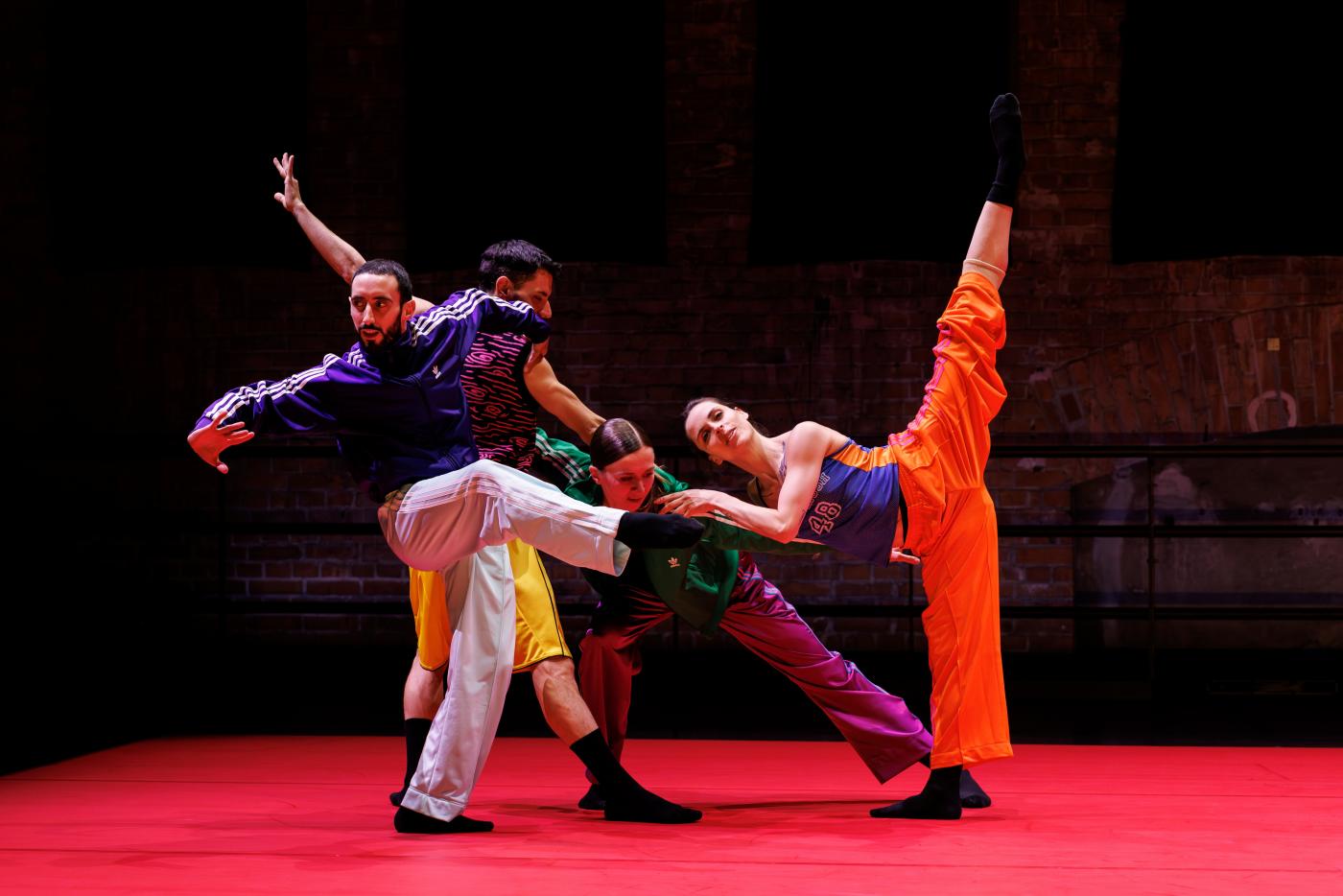 Benjamin Millepied’s Hymn to Freedom (set to eponymous piano music by the Oscar Peterson Trio) was, by contrast, trite. Two men and two women in colorful training wear bounced across the stage in a laid-back manner. One man was pulled across the floor, and then all sauntered off, arm in arm.
Benjamin Millepied’s Hymn to Freedom (set to eponymous piano music by the Oscar Peterson Trio) was, by contrast, trite. Two men and two women in colorful training wear bounced across the stage in a laid-back manner. One man was pulled across the floor, and then all sauntered off, arm in arm.
For Charlie, Sofia Nappi, choreographer and artistic director of the Italian company KOMOCO, chose the Italian version (perhaps due to patriotism) of Charles Aznavour’s song La bohème. Charlie seemed to play on a French boulevard (or at an Italian piazza) in the 1960s, where seven pedestrians performed unintentionally. Each danced in their own bubble until they became attuned to one another. Grooving together in slow motion, they gradually gathered pace. The space consumed by the swinging of their arms and legs contradicted the sudden sense of confinement.
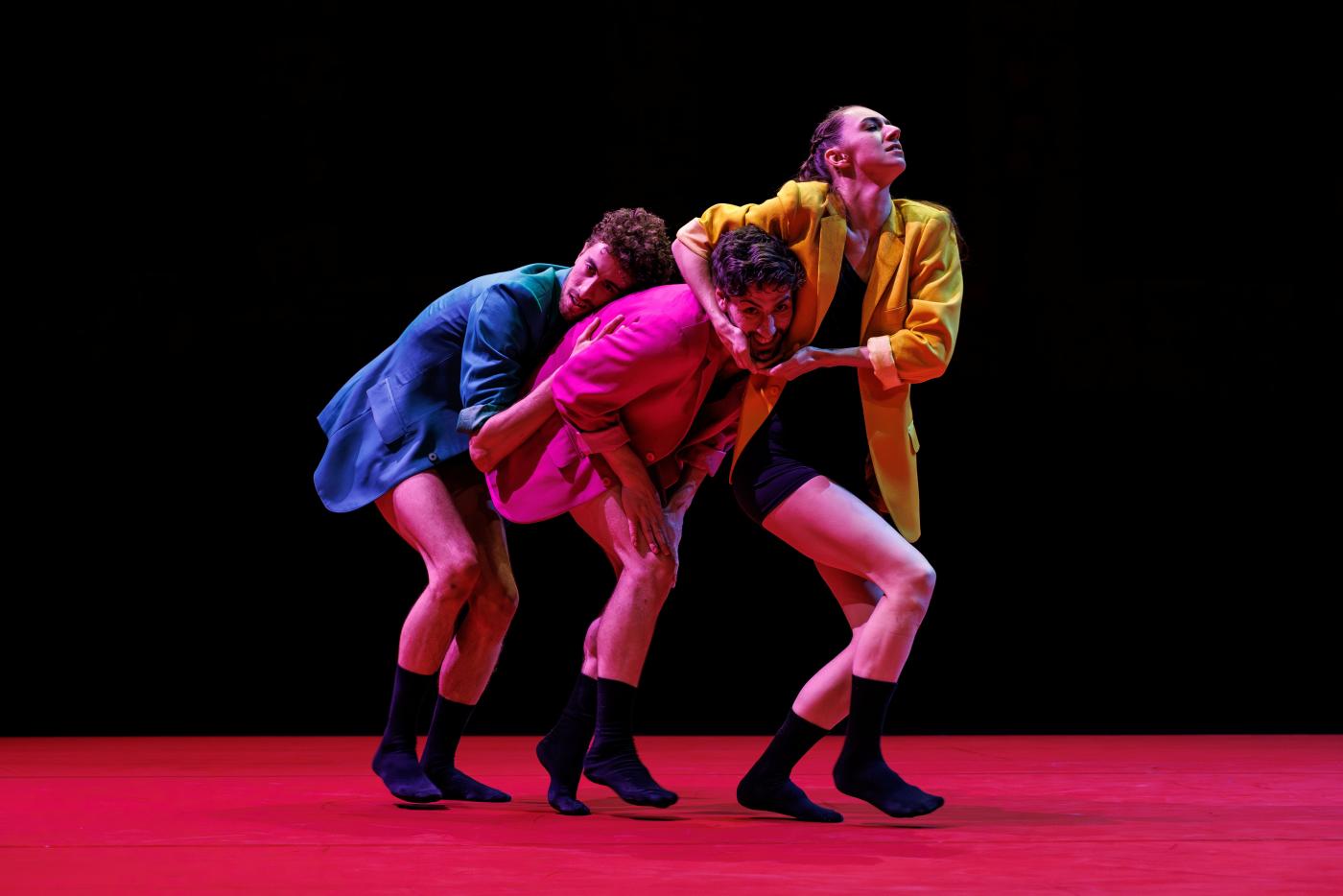 Johan Inger made Bruna Andrade and Barbara Melo Freire run back and forth on a diagonal red carpet. They seemed as indecisive and unfocused as his piece’s title, A Thousand Thoughts, suggested. The peal of bells and chirping birds (music by Kronos Quartet) located their incoherent maneuvers close to a church. They flapped their arms, waved their hands, wriggled across the floor, paused meaningfully, and, after their knees gave way like collapsing scaffolding, pursued a different thought. They repeatedly rushed back to the front stage as if unable to bid farewell. At last, they left.
Johan Inger made Bruna Andrade and Barbara Melo Freire run back and forth on a diagonal red carpet. They seemed as indecisive and unfocused as his piece’s title, A Thousand Thoughts, suggested. The peal of bells and chirping birds (music by Kronos Quartet) located their incoherent maneuvers close to a church. They flapped their arms, waved their hands, wriggled across the floor, paused meaningfully, and, after their knees gave way like collapsing scaffolding, pursued a different thought. They repeatedly rushed back to the front stage as if unable to bid farewell. At last, they left.
The main eyecatchers of Stijn Celis’s Thinkin About! were the bright pink, yellow, and blue jackets of its three dancers (Anneleen Dedroog and two men). Celis’s casual pas de trois (set to Bobby McFerrin’s Thinkin’ About Your Body) concluded with a lengthy solo that Dedroog danced in silence. Her fingers spelled out an incomprehensible but forceful message, then she hopped about frantically.
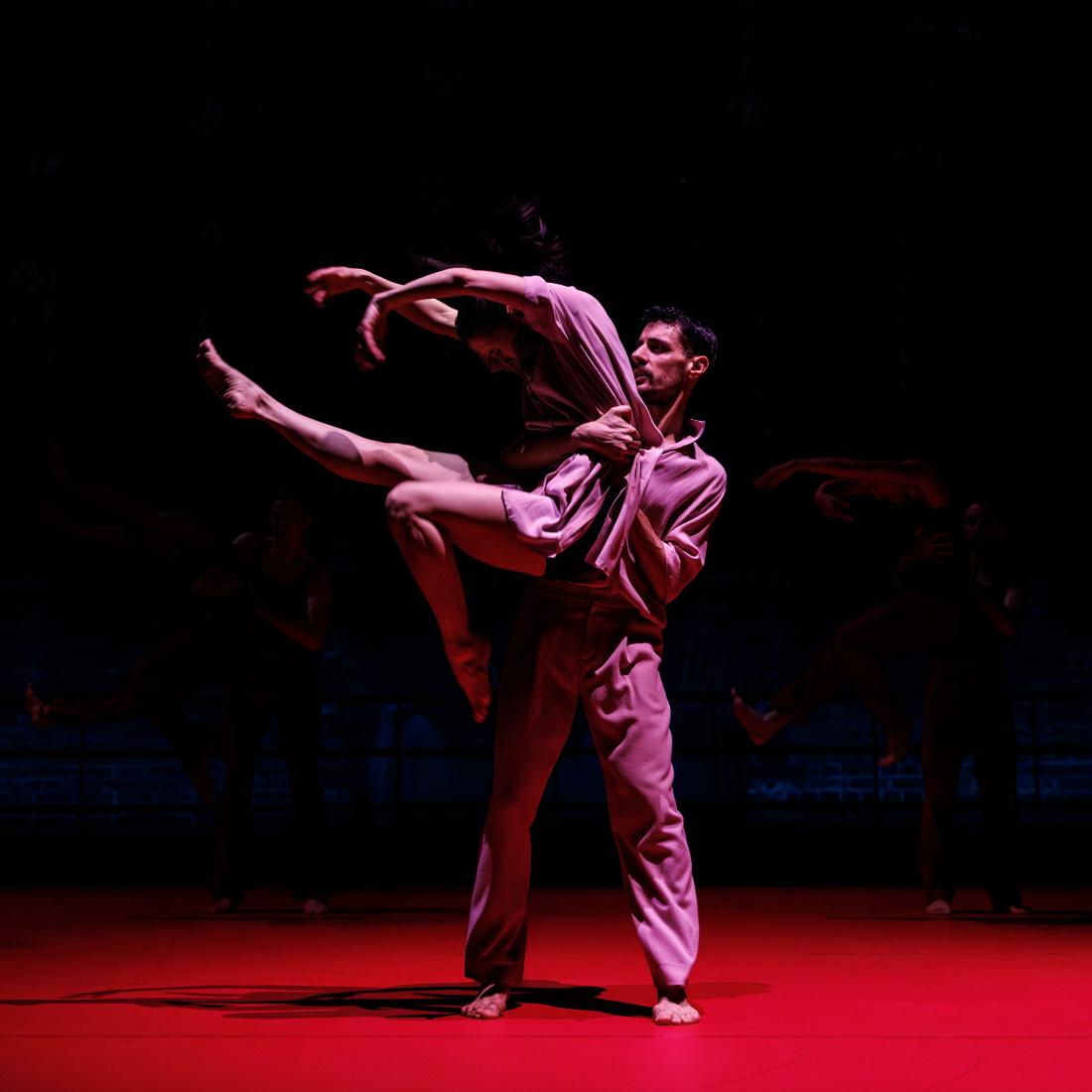
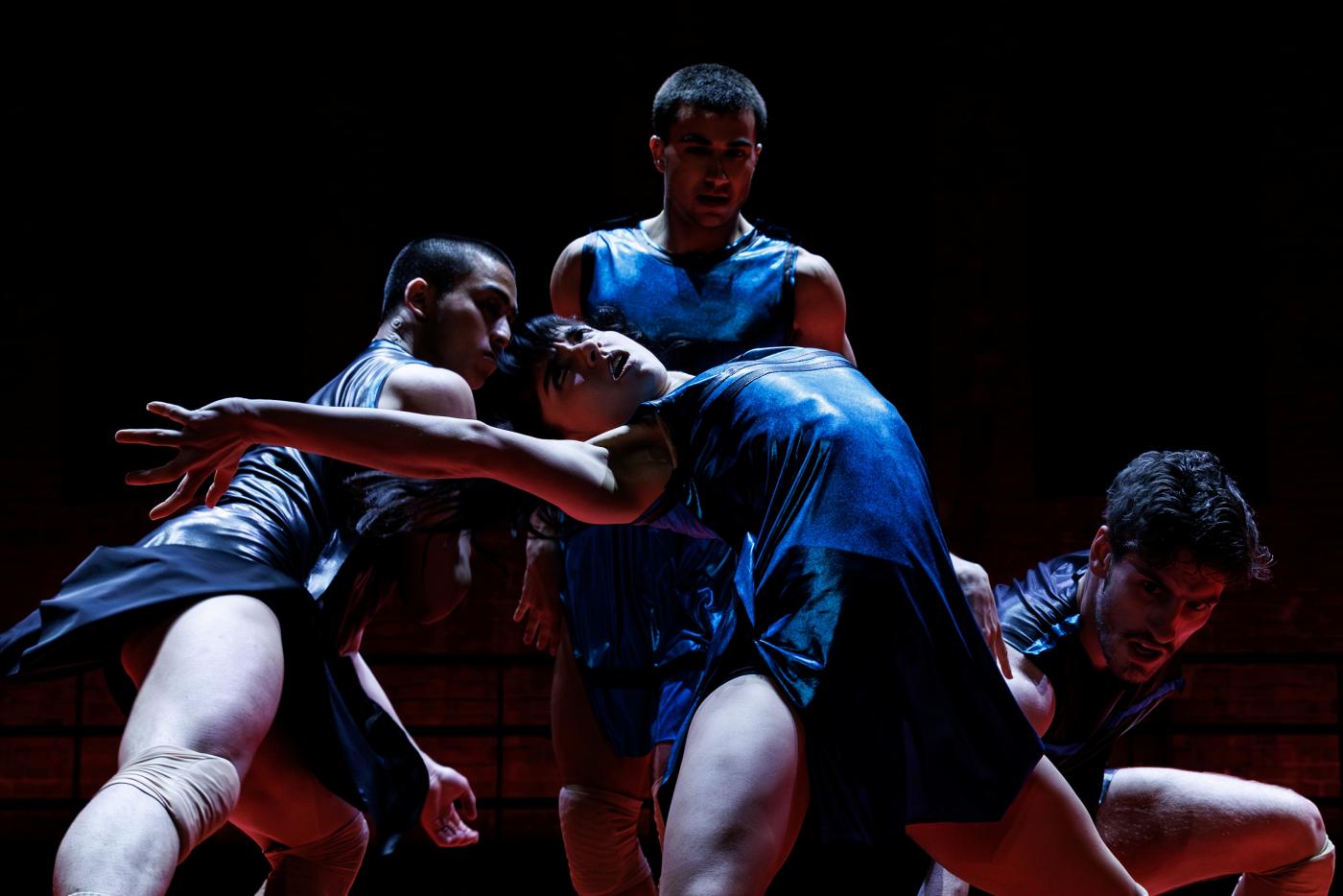 Virginie Brunelle chose Philip Glass’s Les Enfants Terribles (more precisely, its piano duet Paul Is Dying) as the accompaniment for Carousel. The piece is based on The Terrible Children (The Strange Ones, respectively) but includes no suicide. Instead, Paul stood in the center of a spotlight, surrounded by seven other dancers, one portraying his sister Elisabeth. Each time that she embraced him from behind, he stuck his hands beneath his belt as if they were tied. The others responded to him aggressively, hugged him, or copied his and Elisabeth’s partner dance like a background corps. Presumably, the piece’s title referred to the last scene in which all the dancers circled clockwise around Paul.
Virginie Brunelle chose Philip Glass’s Les Enfants Terribles (more precisely, its piano duet Paul Is Dying) as the accompaniment for Carousel. The piece is based on The Terrible Children (The Strange Ones, respectively) but includes no suicide. Instead, Paul stood in the center of a spotlight, surrounded by seven other dancers, one portraying his sister Elisabeth. Each time that she embraced him from behind, he stuck his hands beneath his belt as if they were tied. The others responded to him aggressively, hugged him, or copied his and Elisabeth’s partner dance like a background corps. Presumably, the piece’s title referred to the last scene in which all the dancers circled clockwise around Paul.
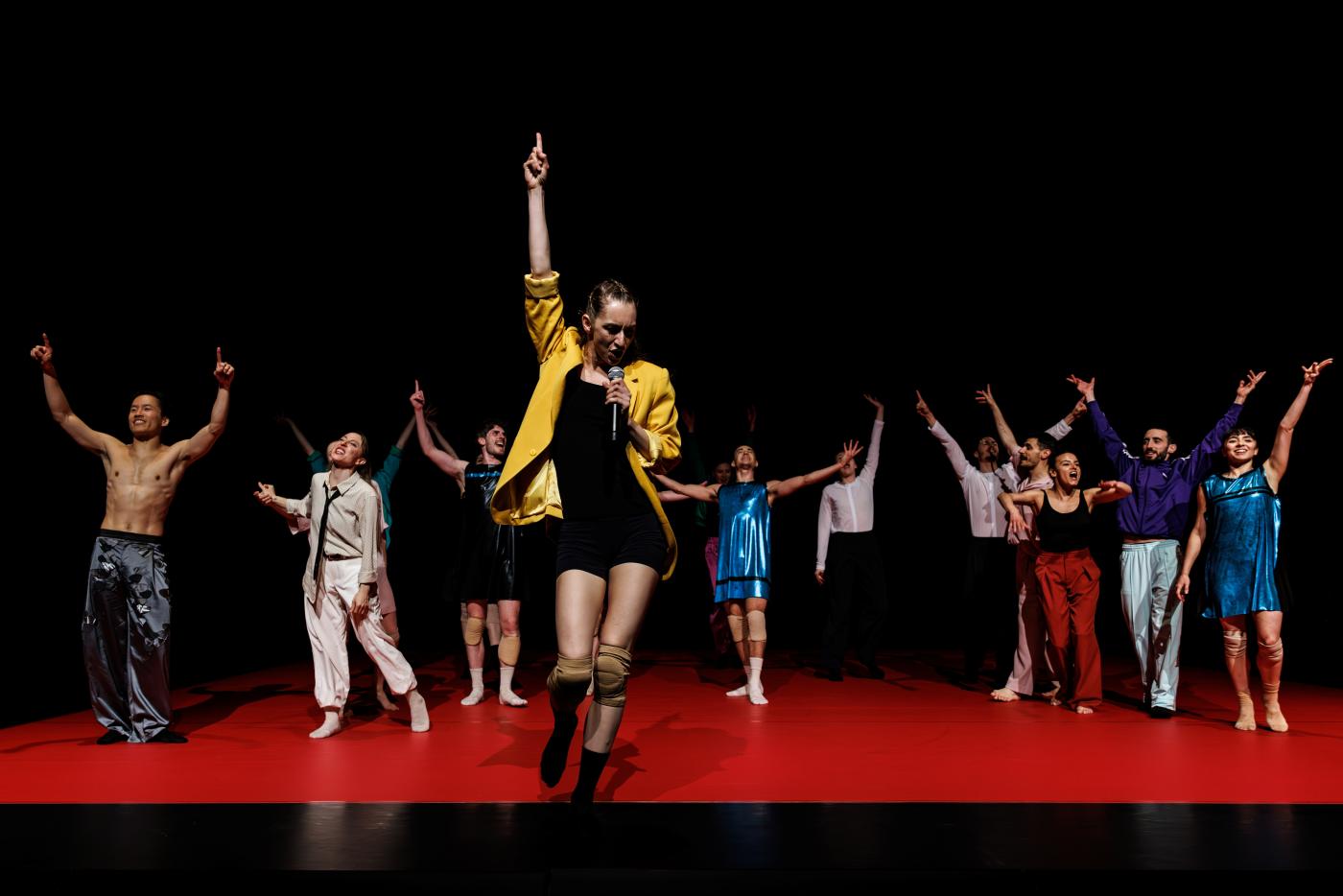 Erika Stucky’s My Sharone accompanied the four dancers of Andonis Foniadakis (three men and one woman), who flailed about as if eager to cast off their limbs. Foniadakis’s main intention seemed to keep them moving no matter what and make a big deal out of it. Perhaps to guide the audience’s response, the recorded music included applause.
Erika Stucky’s My Sharone accompanied the four dancers of Andonis Foniadakis (three men and one woman), who flailed about as if eager to cast off their limbs. Foniadakis’s main intention seemed to keep them moving no matter what and make a big deal out of it. Perhaps to guide the audience’s response, the recorded music included applause.
Barak Marshall’s second piece, The End, again set to music by Fanfare Ciocǎrlia, was designed to pump up the audience before the break. It scattered all the dancers across the stage as if for a warm-up floor class. As the audience clapped along to oompah-oompah rhythms, Anneleen Dedroog had to yell over the noise to introduce her colleagues. Although staging ten world premieres is a feat, Part I of the evening felt like an exhausting marathon. No wonder all sixteen dancers lay as flat as pancakes when the curtain closed.
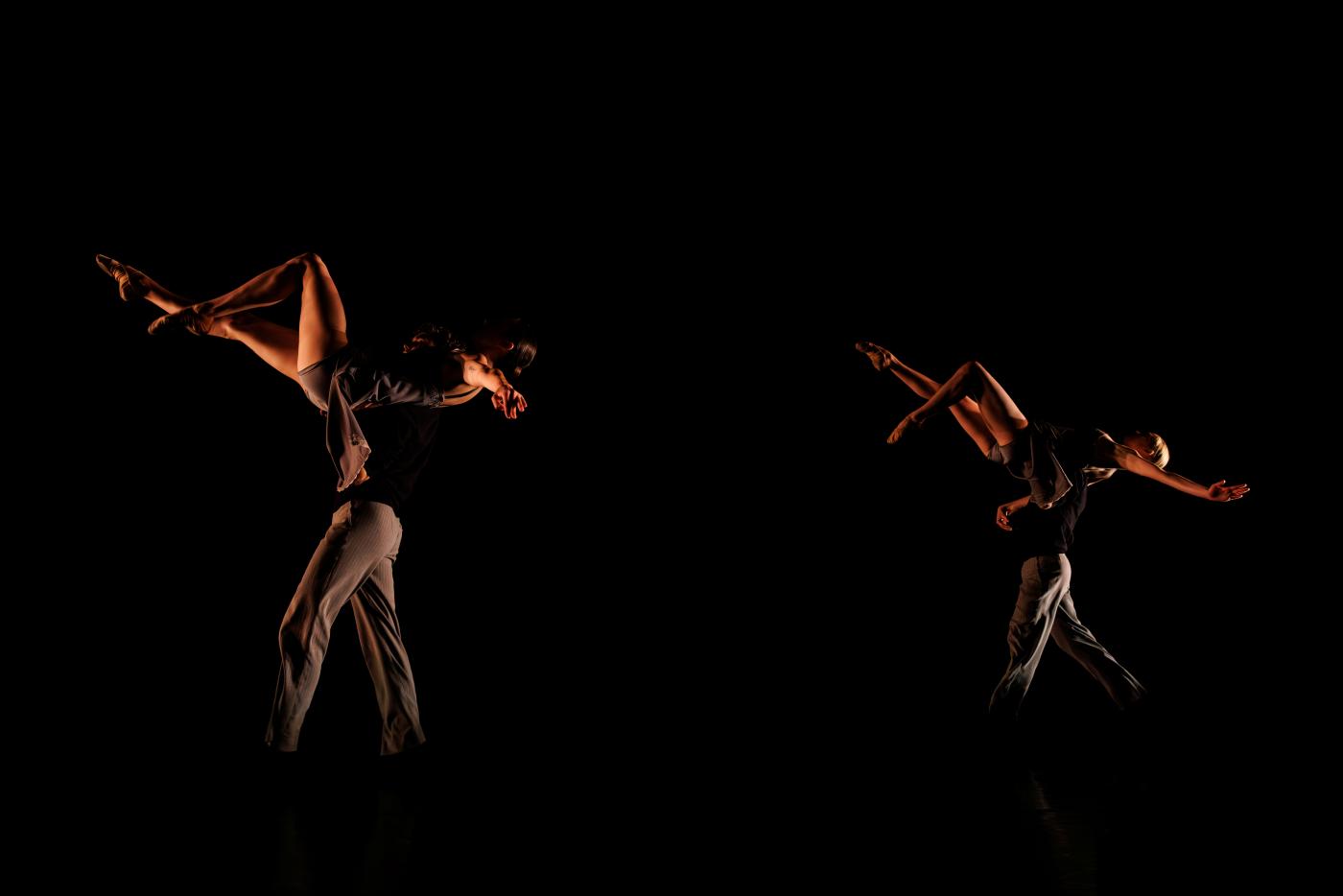 The second part of the program included four established pieces of the repertory and the six dancers of the junior company. Their Lickety-Split (which I saw in March) is a mature and substantial piece, especially in light of the evening’s new creations. Eric Gauthier’s witty ABC (choreographed for Johan Kobborg in 2019) was fabulous. Shori Yamamoto explained the dance alphabet, switching from “Albrecht” to “ballet boy,” “bad ass,” “Balanchine,” and “broken ballerina” before collapsing.
The second part of the program included four established pieces of the repertory and the six dancers of the junior company. Their Lickety-Split (which I saw in March) is a mature and substantial piece, especially in light of the evening’s new creations. Eric Gauthier’s witty ABC (choreographed for Johan Kobborg in 2019) was fabulous. Shori Yamamoto explained the dance alphabet, switching from “Albrecht” to “ballet boy,” “bad ass,” “Balanchine,” and “broken ballerina” before collapsing.
Compared to Monstruo Grande, Goecke’s 2018 Infant Spirit was less focused and sharp. It’s an homage to Pina Bausch who inspired and nurtured him during his early career. Bruna Andrade danced the melancholic solo, wearing a gray suit with a pink carnation stuck in the lapel. Given the flower and microphone on the right front stage, Infant Spirit may allude to a scene in Bausch’s Carnations in which a man in a black suit interprets George Gershwin’s The Man I Love into sign language. When sped up, the movements of his hands have a striking resemblance to Goecke’s style.
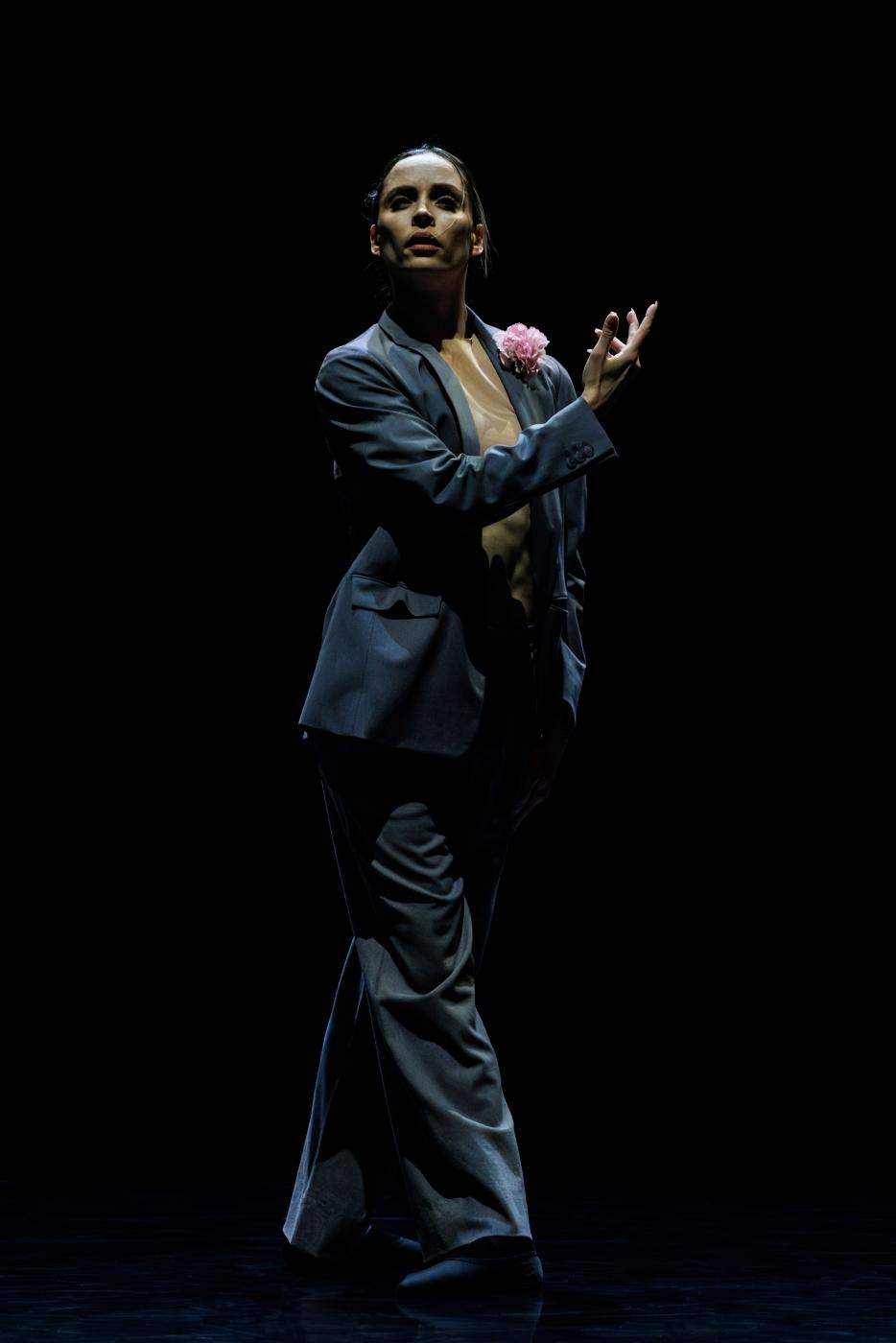
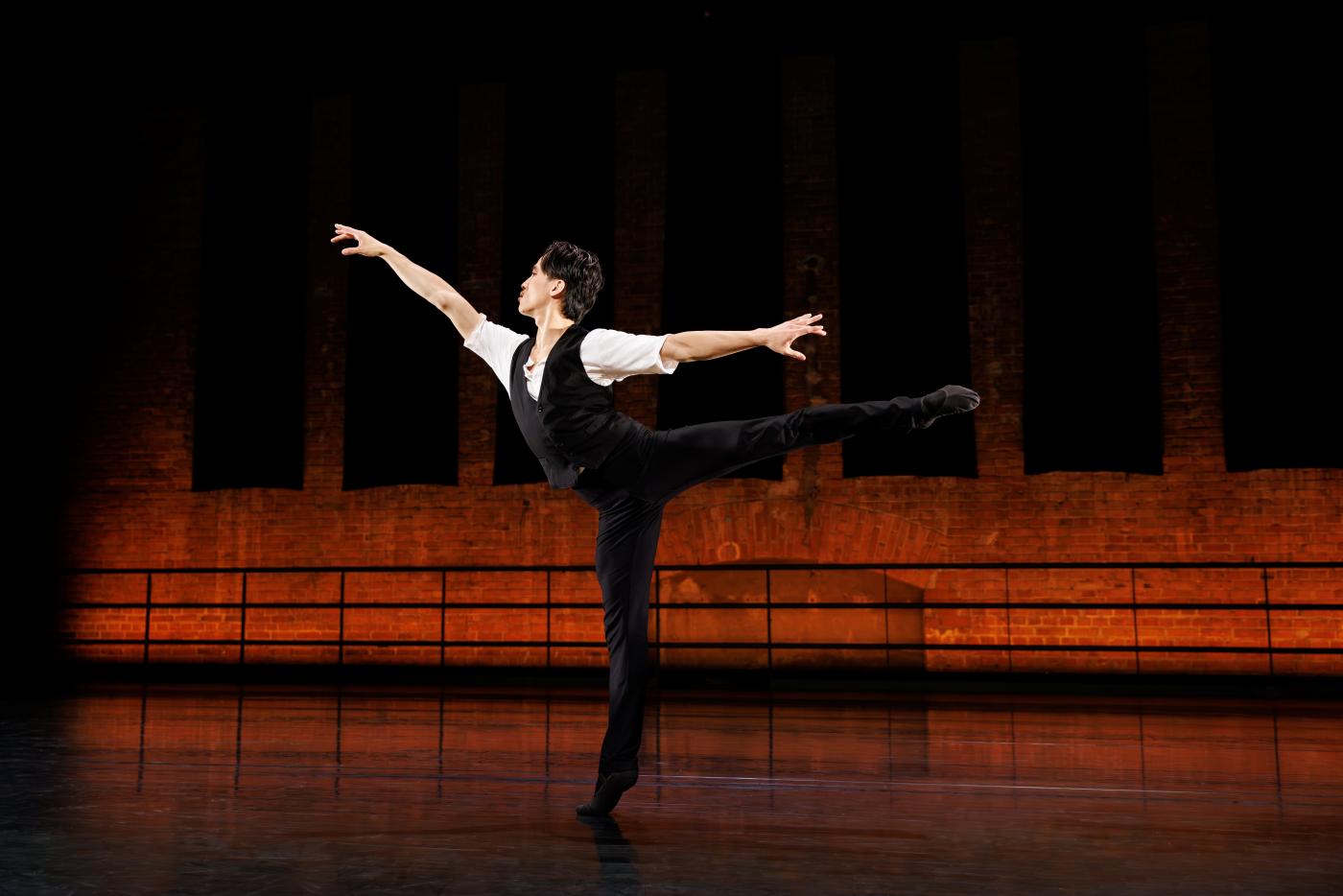 Foniadakis’s Bolero + reinterprets Maurice Béjart’s choreography with the help of one-man trampolines. Each of the six junior dancers and eight main company members bounced on one. Neon-colored insertions in their costumes and hair accessories (which temporarily gleamed under black light) distracted from the fact that Bolero + lacked creativity and energy. Nevertheless, it was cheered by the audience.
Foniadakis’s Bolero + reinterprets Maurice Béjart’s choreography with the help of one-man trampolines. Each of the six junior dancers and eight main company members bounced on one. Neon-colored insertions in their costumes and hair accessories (which temporarily gleamed under black light) distracted from the fact that Bolero + lacked creativity and energy. Nevertheless, it was cheered by the audience.
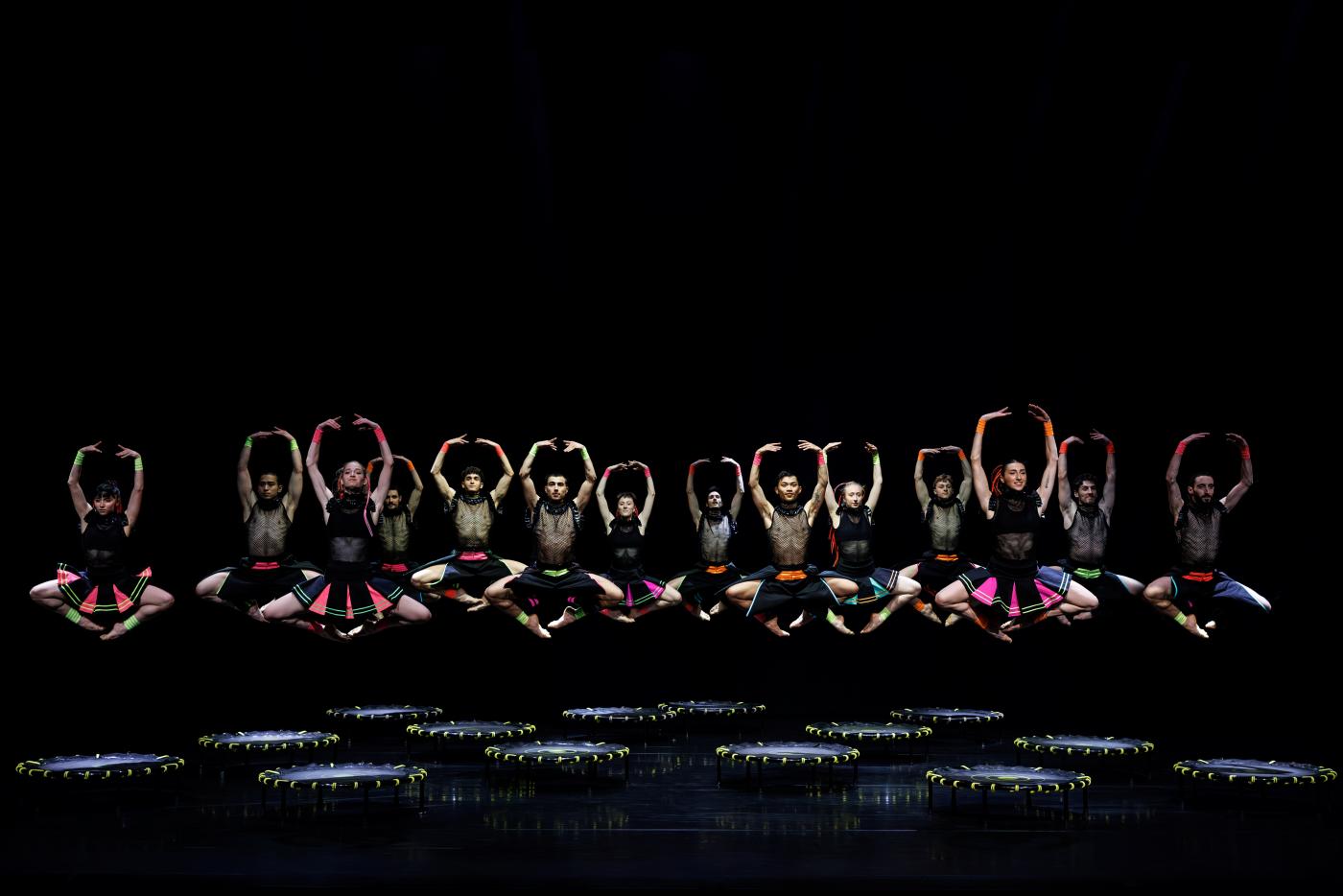
| Link: | Website of Gauthier Dance | |
| Photos: | 1. | Ensemble, “Hold me Now” by Dominique Dumais, Gauthier Dance 2025 |
| 2. | Shori Yamamoto and Sidney Elizabeth Turtschi, “Monstruo Grande” by Marco Goecke, Gauthier Dance 2025 | |
| 3. | Ensemble, “Hymn to Freedom” by Benjamin Millepied, Gauthier Dance 2025 | |
| 4. | Ensemble, “Thinkin About!” by Stijn Celis, Gauthier Dance 2025 | |
| 5. | Ensemble, “Carousel” by Virginie Brunelle, Gauthier Dance 2025 | |
| 6. | Ensemble, “Sharona” by Andonis Foniadakis, Gauthier Dance 2025 | |
| 7. | Anneleen Dedroog and ensemble, “The End” by Barak Marshall, Gauthier Dance 2025 | |
| 8. | Ensemble, “Lickety-Split” by Alejandro Cerrudo, Gauthier Dance Juniors 2025 | |
| 9. | Shori Yamamoto, “ABC” by Eric Gauthier, Gauthier Dance 2025 | |
| 10. | Bruna Andrade, “Infant Spirit” by Marco Goecke, Gauthier Dance 2025 | |
| 11. | Ensemble, “Bolero +” by Andonis Foniadakis, Gauthier Dance and Gauthier Dance Juniors 2025 | |
| all photos © Jeanette Bak | ||
| Editing: | Kayla Kauffman |
